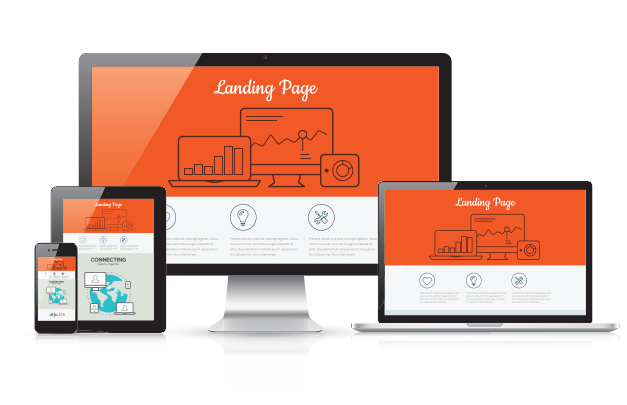The sales process has come a long way from cold calling and door-to-door selling. Thanks to search engines, it’s now easier than ever for both B2C and B2B prospects to do their own research, which means that, by the time they speak with a salesperson, they’re both better informed and more likely to buy.
This huge shift in the way we sell also means that it’s more important than ever for marketers to be in the business of sales enablement.
What is Sales Enablement?
Sales enablement is made up of all the content, technology, and processes that allow sales teams to sell more efficiently and at a higher velocity. In practice, good sales enablement practices require collaboration between sales and marketing departments, who work together to attract, nurture, and close high-quality leads.
From Door-to-Door to Inbound: The Evolution of Sales
At its heart, sales is about building strong relationships. For more than a century, this has been done through in-person meetings, with salespeople trying to travel as quickly as possible between clients.
From the mid- to late 20th century, sales thought leaders were focused on refining their methodologies. One of the strategies that gained popularity during that time was SPIN selling, developed in the 1980s by Neil Rackham. SPIN selling involves a series of questions that sales reps ask their prospective buyers about their situations, problems, implications, and needs. This approach positioned salespeople as consultants who help solve problems.
The advent of the Internet in the 1990s empowered both buyers and sales teams alike, with the former becoming increasingly more informed and the latter being able to communicate more efficiently with their prospects. However, many companies struggled when it came to identifying their most qualified buyers, bogging down the sales process.
Enter big data. By the end of the dot-com boom in the 2000s, the focus turned to producing and organizing data to better predict a lead’s likelihood to close. Sales organizations began to focus on consolidating content and making it accessible for their sales team. Those who were able to leverage predictive analytics saw tremendous growth in their business.
Our relatively new ability to use data to provide salespeople with more (and better) information about their prospects has naturally evolved into what we now know as sales enablement.
Our relatively new ability to use data to provide salespeople with more (and better) information about their prospects has naturally evolved into what we now know as sales enablement — equipping sales teams to have impactful conversations with qualified leads. Marketing’s crucial role is to develop quality content, run inbound marketing campaigns, automate the lead nurturing process, and generally help sales be more efficient.
Over the last decade or so, sales enablement practices have become a cornerstone at successful B2B organizations. Add to this trend a pandemic that forces most salespeople to work from home, and adoption of sales enablement practices have been through the roof in 2020.
How Can Marketers Lead the Way on Sales Enablement?
Sales enablement strategies are built upon content marketing, but they go beyond the typical inbound marketer’s scope. To build a solid sales enablement strategy, a marketer needs to be keyed into two things: (1) what works for their sales team and (2) what questions buyers have. This allows marketers to develop content that not only fits into the sales process but actually facilitates sales.
The difference between content developed for inbound marketing campaigns and that used for sales enablement is the audience: content marketing targets leads in the early stage of the buyer’s journey, while sales enablement is focused on the later stages of the sales pipeline. Common content marketing deliverables include blog posts, white papers, and case studies, while content created for sales enablement includes things like call scripts, email templates, and capabilities presentations.
MQLs and SQLs: Qualifying Your Leads for Handoff
It’s marketing’s job to create a pipeline of qualified leads for sales, but not all leads are created equal. A sales enablement strategy involves differentiating between nominally curious parties and people who are ready (or almost ready) to buy and can be handed off to sales.
Marketing qualified leads (MQLs) are leads who have shown some active interest in what you offer; maybe they entered their email to download a white paper or signed up for email updates from your organization. A sales qualified lead (SQL), on the other hand, is a lead that has decision-making power and has shown specific interest in buying, either by accessing bottom-of-the-funnel content or by requesting to speak to a sales representative.
To achieve sales and marketing alignment, you must be able to differentiate MQLs from SQLs and know who is ready for handoff. The easiest way to do this is to use a marketing automation platform to score leads based on their engagement and behaviors as you nurture them, otherwise known as lead scoring.
In addition to leads being nurtured by marketing, there are also “hand-raisers,” or new leads who want to speak directly to sales. For these leads, it’s crucial that they be passed to sales immediately, provided they meet all other qualification criteria.
Throughout the entire lead qualifying process, it’s important to remember that leads who are not ready to talk to sales will not always stay unready. Some people need more time to make a decision, or might circle back in a few months. In those cases, sales representatives should avoid hectoring the unready leads. Instead, leave them to the marketing team, who can continue to nurture them until they reach a stage of readiness.
Service-Level Agreements: Why do you need one?
A service-level agreement (SLA) is an agreement between a service provider and its customer that guarantees a certain output. Sales and marketing teams use SLAs as the basis for a cooperative relationship, wherein each team understands what they need to provide for the other so that the company can meet its revenue goals. An SLA provides accountability for both departments and ensures they are acting as colleagues — not competitors.
An SLA will set forth the number of leads that marketing should provide to sales, as well determine how soon a sales rep should make contact with the leads after they’ve been handed off from marketing. To figure out those numbers, you’ll need to determine how often leads turn into opportunities, as well as how often opportunities turn into sales. Once those rates are determined, the two teams can work together to define specific goals and expectations.
Of course, your SLA may need some refining after you debut it. Perhaps marketing is not generating enough leads or is delivering them all at the beginning or end of the month. Conversely, marketing might deliver too many leads, overwhelming the sales team. If these pitfalls are stymieing your revenue goals, it’s time to reexamine your process and tweak some details.
How to Automate Your Sales Process
Sales enablement technology is a valuable tool that can help your team reach the next level of success. A good CRM will make your workflows faster, more personalized, and more responsive by leveraging two powerful things: data and automation. Use it to automate emails, track analytics, and provide insight on individual rep performance.
On the marketing side of things, these platforms can tell your team which content resonates best with leads and make it easy to execute targeted, personalized campaigns. And working from the same tools can help streamline the relationship between sales and marketing, improving the symbiosis between the two.
Are you a marketing leader who wants to lead the way on a sales enablement strategy? Are you a sales leader who wants to generate more qualified leads through inbound marketing and automation? Trekk develops tailored strategies for organizations looking to attract, grow, and retain customers. If that’s you, let’s talk.



